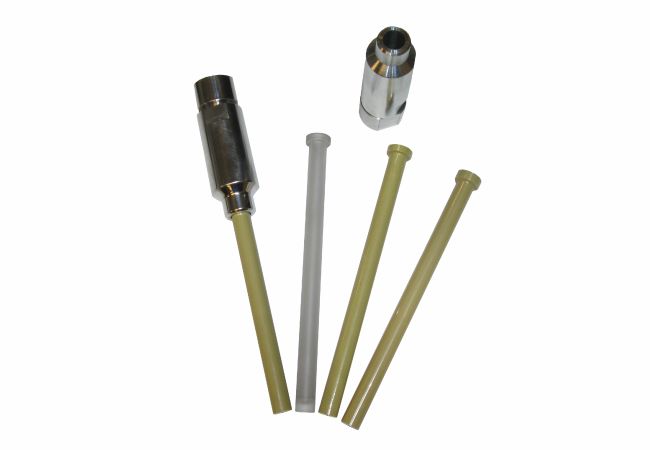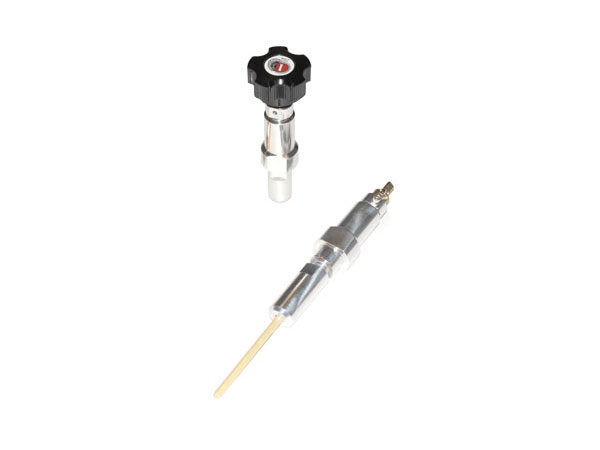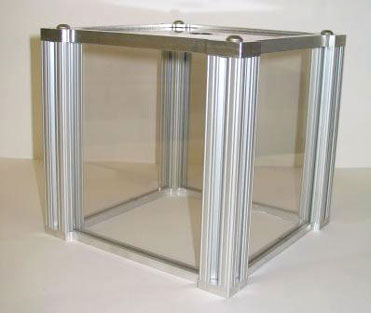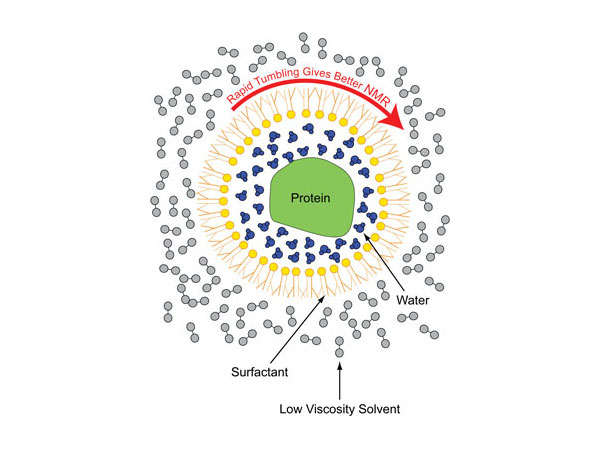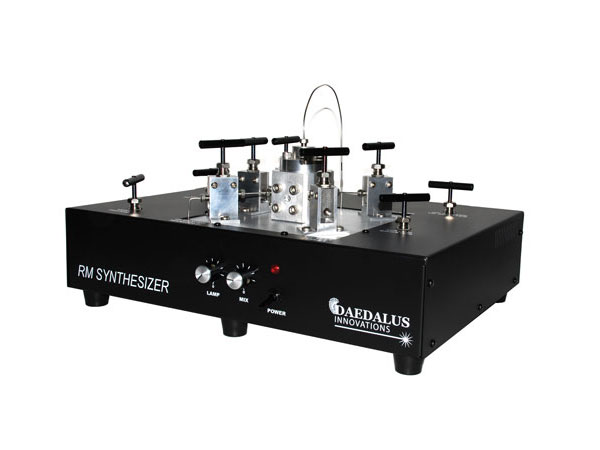High Pressure NMR
High pressure NMR has a long and storied history in physics, chemistry and biophysics. However, historically the method has been greatly limited by the absence of commercial availability of high performance, large active volume NMR sample tubes capable of safe and sustained operation above 1 kbar pressures. Daedalus Innovations has solved this problem. We are the only source of complete high pressure NMR capability. Utilizing patented and proprietary designs and manufacturing processes, the Daedalus Innovations’ line of zirconia high pressure NMR tubes, titanium manifolds and computer-controlled pressure generator is in a class by itself.
Our customers include leading academic and industrial researchers around the world and are engaged in far-ranging research projects including oil and gas exploration, geological reservoir characterization, nuclear chemistry, structural biology, molecular biophysics, and quantum computing.
The Daedalus Innovations’ high pressure NMR cells are truly in a class by themselves. Specialized ceramic materials, proprietary manufacturing and patented tube and manifold designs open the door to high performance NMR spectroscopy at pressures ranging up to 3,000 bar. Used seamlessly with modern cryogenic probes, the high active volume (2.6 mm ID) gives this tube unmatched NMR performance and reliability.
For lower pressure applications, such as those employed in the reverse micelle encapsulation technique, we offer larger volume zirconia tubes with 3.6 mm ID in a 5 mm OD context. W now provide 10 mm OD sapphire and zirconia tubes mounted in our pressure manifold.
We offer two styles of manifolds for holding the high-pressure tubes. One manifold is a very high-pressure dynamic manifold, which allows for the pressure in the NMR cell to be changed while the NMR cell is in the instrument. It does require a constant connection to an external pressure source such as the Xtreme-60 Syringe Pump.
The other style of manifold has an integrated needle valve for self-contained pressure confinement. This NMR cell allows the researchers to prepare the sample on the bench, close the valve, and transfer the NMR cell to the instrument for analysis. The pressure is static so altering the pressure requires removal and reconnection to a pressure source.
High Pressure Flow Cell: The growth of high-field, high-performing benchtop NMR systems has led to an expansion of NMR availability for a variety of applications. Whether it is rapid analysis of reaction products in the laboratory or quantitative measurements of cannabis plants, the benchtop NMR provides tools to quickly provide results.
We have developed a low-cost flow cell to address processes the require low pressures to complete. Supercritical carbon dioxide extraction is one such example. The flow cell can be connected in-line with extraction or other analytic tools for high-throughput, rigorous results.
The flow cell is tested to 300 bar, and is terminated by Swagelok connectors for 1/16" OD tubing. The flow cell is designed to pass through a standard 5 mm bore instrument.
The Xtreme 60 Syringe Pump: Robust and precise control of pressure. Utilizing a large working volume, the Xtreme-60 provides the ultimate in pressure generation and control. Utilizing a high-torque motor and a precise computer control the Xtreme-60 is capable of generating pressures up to 4 kbar utilizing even relatively non-compressible water as the pressure generating fluid.
SNAPSHOT STATS
| Standard Zirconia | 5mm OD (2.6 mm ID) × 92 mm | Versions to 3,000 bar |
| Large Volume Zirconia | 5mm OD (3.6 mm ID) × 92 mm | 300 & 1,000 bar versions |
| 10 mm Zirconia | 10mm OD (7.0 mm ID) x 149 mm | 500 & 1,000 bar versions |
| 10 mm Sapphire | 10mm OD (7.0 mm ID) × 149 mm | 300 bar |
+5°C to +100°C (regular seals)
-15°C to +125°C (optional seals)
Support Equipment
Safety Box: This acrylic walled box provides protection to users while pressurizing cells. It also helps protect the setup while moving samples from the bench to the spectrometer. It also provides a convenient place to store high pressure cells when not in use. The box is open on the bottom.
Bruker and Agilent versions are available.
Cell Setup Tool: The high pressure tubes are not permanently fixed in the cell to allow for tubes to be switched and cleaned independently. This benefit requires some care when assembling the high pressure cell. This tool assists in that process by helping to keep the tube axially aligned with the cell during setup which improves seal integrity and lowers the probability of improper fit in the NMR.
Only one is needed for each cell type (Bruker or Agilent)
High Pressure Seals (TS01): These form the primary seal between the high pressure tube and manifold. They are single use. One version works for all tube and cell combinations.
Reverse Micelle NMR
Though solution NMR has become a powerful tool for structural characterization of biological macromolecules, particularly proteins, it is fundamentally limited by the so-called ‘tumbling problem.’ Large proteins tumble relatively slowly in solution producing greatly broadened spectral lines as a result of fast transverse relaxation. Increased transverse relaxation not only broadens peaks but also decreases magnetization transfer efficiency, which drastically impedes collection of multi-dimensional data that is often needed for efficient analysis. Several strategies have been developed to mitigate these problems including the use of isotopic labeling schemes to minimize cross-relaxation and simplify spectra, the TROSY effect to reduce the detrimental effects of averaged transverse relaxation and the CRINEPT strategy for more optimal polarization transfer. Unfortunately, limitations inherent to these approaches have restricted the precision of structural models for proteins of significant size.
Encapsulation of proteins within the protective aqueous of core of reverse micelles offers the ability to decrease macromolecular tumbling through preparation in low viscosity solvents such as liquid ethane. Gaining popularity, this novel sample also offers advantages in a variety of other contexts such as studies of integral and anchored membrane proteins, protein-ligand interactions, stabilization of the marginally stable proteins, protein hydration to name but a few applications.
Sample preparation is the key ingredient. Daedalus Innovations provides the only source of integrated sample preparation apparatus and high performance NMR sample tubes capable of seamless operation in modern cryogenic probes at the modest pressures necessary for reverse micelle NMR (generally less than 300 bar).
Liquid ethane is the ultra-low viscosity solvent of choice. The Daedalus Innovations reverse micelle sample synthesizer is the only commercially available apparatus designed specifically for the preparation of solutions of encapsulated proteins dissolved in low viscosity fluids. Designed to work with the X-treme 10 syringe pump and the high volume (3.6mm ID) zirconia high pressure NMR tube, the RM Synthesizer™ directs the creation of solutions of encapsulated proteins with ease.
Don’t think you can make a reverse micelle sample? Try our demonstration kit and convince yourself!
Ordering
Please contact us for a quotation:
sales@daedalusinnovations.com
European requests for quotations can be directed to:
David Cross
cross@rototec-spintec.com
Typical Set-Ups
Reverse Micelle NMR
plus standard high pressure tubing and fittings as required
High Pressure NMR
plus standard high pressure tubing and fittings as required


